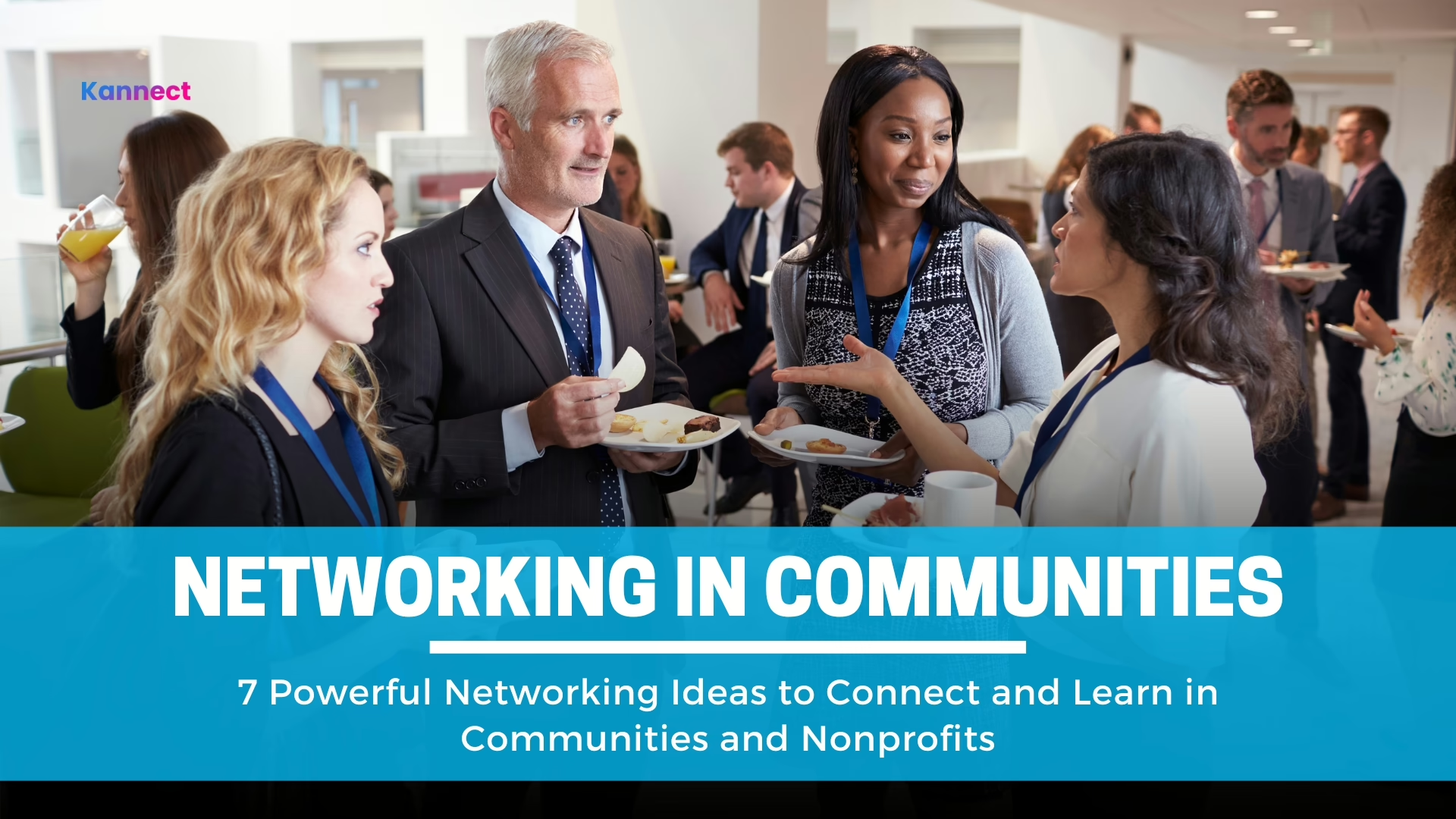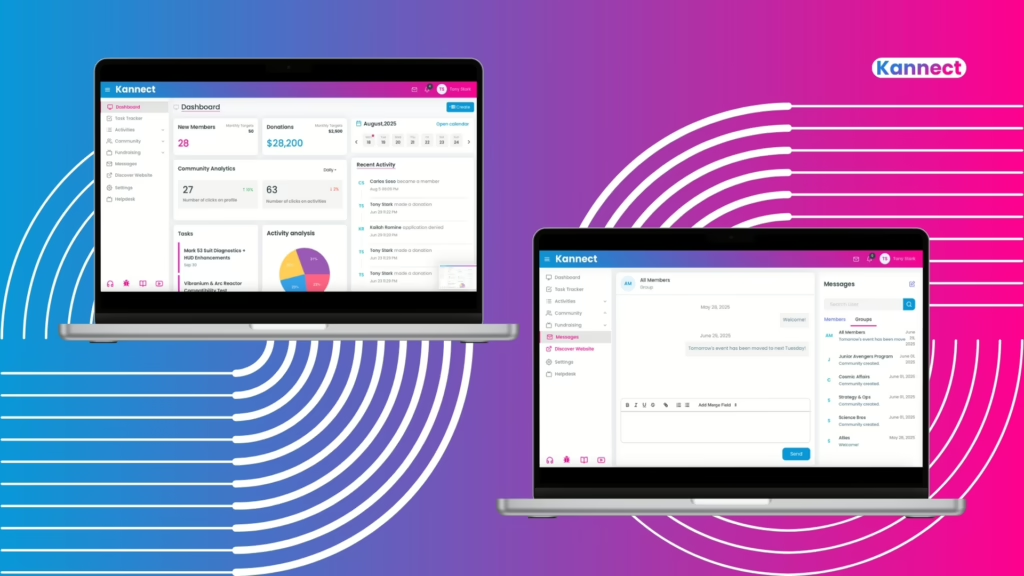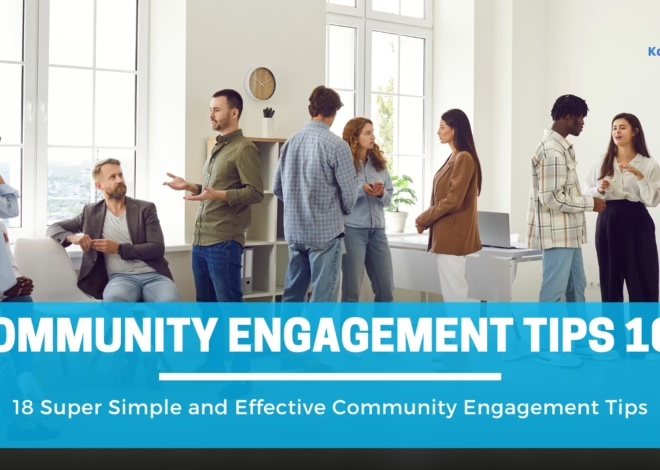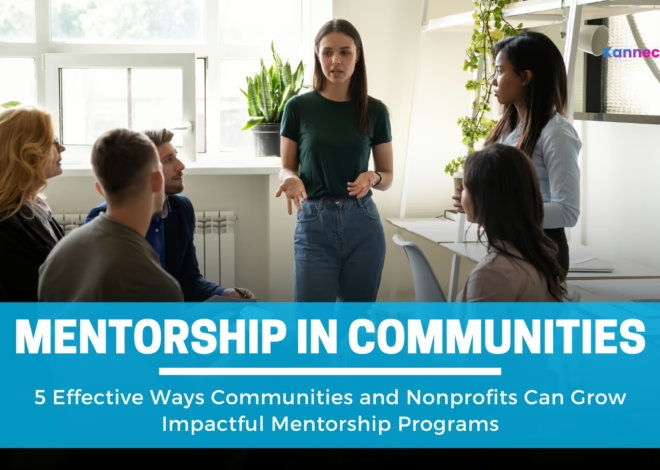
7 Powerful Networking Ideas to Connect and Learn in Communities and Nonprofits
Table of Contents
Smart Summary: Here’s what this blog on Networking will explore
▶ What is Networking? (Definition and Meaning)
Building and nurturing relationships that create mutual opportunities, strengthen communities, and fuel collaboration for nonprofits and social causes.
▶ Can Networking Really Help You?
Yes, by expanding collaboration, opening doors to partnerships, funding, and shared resources that drive mission success.
▶ How Networking Works
Relies on trust, authentic engagement, active listening, and consistent follow-up to transform connections into meaningful, sustained relationships.
▶ What is Networking and Marketing? (Professional and Social Networking)
Combines career-oriented and social relationships to amplify mission outreach and deepen community engagement.
▶ How Networking Helps Market Your Mission
Through authentic storytelling, advocacy, and partnerships that boost visibility and attract loyal supporters.
▶ 7 Effective Networking Strategies (With Examples)
Include hosting events, peer collectives, leveraging social tools like LinkedIn, Facebook, and Kannect, forging partnerships, using digital hubs, sharing success stories, and fostering deep connection-building.
▶ How Kannect Supports Networking in Communities and Nonprofits
Offers smart matching, group management, event facilitation, communication tools, and analytics to build and maintain active, impactful community connections.
▶ How to Build Your Own Networking Community
Strategies and tips for communities to cultivate vibrant, supportive networks that advance collective missions and individual growth.
▶ Ready to Grow Your Mentorship Program?
Join Kannect and gain access to tools and resources for building engaged, mission-driven networks.
▶ FAQs
Detailed answers addressing network building, benefits, differences between social and professional ties, and tools to support networking for impact.
Let’s Dive In!
What is Networking? (Networking Definition and Meaning)
Networking is the intentional and strategic process of establishing, nurturing, and maintaining relationships for mutual benefit, particularly within professional and social contexts. It goes beyond simple introductions to building meaningful, ongoing connections where knowledge, resources, and opportunities are shared freely.
In communities and nonprofits, networking empowers individuals and organizations by strengthening the collective capacity to solve problems, innovate, and expand impact. It thrives on reciprocal exchanges, fostering trust and collaboration, and enabling members to leverage each other’s strengths. For example, a nonprofit professional who actively networks can gain access to funding partners, volunteer talent, and innovative program ideas, accelerating organizational growth and effectiveness.
Networking also involves tapping into diverse social and professional groups both in-person and through online platforms, such as LinkedIn or specialized community hubs like Kannect. This multifaceted approach increases visibility and builds bridges across sectors, multiplying opportunities for collaboration and learning.
Through ongoing engagement and shared goals, network-building creates a resilient fabric that holds communities together, driving positive social change and mission success.
Can Networking Really Help You?
Absolutely. Networking is a powerful catalyst for both personal and organizational growth, especially in nonprofit and community contexts. It enriches learning by expanding access to new ideas, best practices, and perspectives which can fuel innovation and problem-solving.
For example, a nonprofit leader participating actively in local networking hubs connected with other organizations and funders, leading to new partnerships that increased funding streams and program reach. This collaboration resulted in more effective services delivered to the community, demonstrating how connections translate into real-world impact.
Network-building also builds influence and visibility, helping individuals and organizations become recognized voices in their fields, attracting volunteers, donors, and supporters. Social media campaigns by organizations like Charity: Water leverage networked supporters whose personal storytelling spreads awareness exponentially online, driving successful fundraising.
Moreover, network-building fuels collaboration. When diverse organizations connect, they combine their resources to tackle complex challenges together. Habitat for Humanity exemplifies this by cultivating a global network of affiliates and corporate partners, enabling large-scale housing solutions.
Overall, networking is not just about exchanging business cards but forging meaningful, ongoing relationships that open doors to opportunities and amplify missions.
How Networking Works
Effective network-building functions as a vibrant and dynamic web that grows stronger with trust, active listening, and consistent engagement. The process begins with sincere, authentic interactions where individuals show genuine curiosity and openness about others’ experiences and goals. This authenticity lays a foundation of trust, encouraging participants to share valuable insights, obstacles, and opportunities without hesitation.

A crucial element is active listening, genuinely focusing on and understanding others’ needs and ambitions creates deeper rapport and empathy. For instance, nonprofit leaders who attentively engage at meetings or events often discover collaborative possibilities that align with both parties’ missions, leading to joint initiatives or shared resources that amplify impact.
Maintaining consistent engagement over time transforms casual introductions into robust partnerships. Regularly following up, offering help, and contributing back to the community keeps these connections alive. For example, a community organizer who consistently checks in on peers through calls or online platforms nurtures dependable relationships that foster cooperative efforts during challenging periods.
Purposeful goal-setting further magnifies effectiveness. Participants who approach connections with clear intentions, whether seeking strategic partnerships, donors, or volunteers, make their interactions focused and fruitful. Over time, weaving together these meaningful and intentional relationships builds a resilient network that sustains individual growth while advancing collective missions.
What is Networking and Marketing? (Professional and Social Networking)
Professional networking focus primarily on career development and mission-aligned relationships. These involve building a purposeful presence among peers, partners, and potential collaborators who can contribute to advancing shared goals. For example, LinkedIn serves as a platform where nonprofit leaders can highlight their work, seek partnerships, and share insights with like-minded professionals, helping foster impactful connections.
On the other hand, social networking focus on expanding broader community awareness and engagement through less formal, more personal interactions. This aspect includes platforms like Facebook or community groups, where storytelling, support, and informal advocacy naturally promote a cause. Such social engagement builds trust and loyalty, vital for grassroots movement building.
Together, professional and social networking approaches form a holistic strategy. Leveraging both offers a stronger, more diverse network that enhances visibility and influence. For instance, a nonprofit might use LinkedIn to connect with corporate sponsors strategically, while using Facebook groups to engage and activate passionate volunteers.
This combined approach amplifies outreach, making it easier to share your mission authentically and galvanize support across different audiences, ultimately driving sustained impact and growth.
How Networking Helps Market Your Mission
The power of authentic connections, compelling storytelling, and dedicated advocacy significantly amplifies the visibility of your cause, making relational engagement an indispensable asset for mission-driven promotion. Building genuine relationships nurtures trust, enabling supporters to become passionate ambassadors who share your message with personal conviction.
For example, Movember leverages personal fundraising pages tied to social connections, allowing participants to involve friends and family in its mission, turning individual networkers into broad-reaching advocates. Similarly, Habitat for Humanity’s emphasis on volunteer stories humanizes its mission, fostering emotional connections that inspire donations and build a loyal community.
Storytelling plays a central role, sharing real-life impact stories that resonate emotionally makes campaigns memorable and motivates action. The Ice Bucket Challenge’s viral success demonstrated how engaging narratives combined with social participation can generate a massive surge in awareness and funding.
Furthermore, collaborative partnerships with influencers or aligned organizations amplify reach and credibility. Authentic partnerships, backed by data insights, optimize marketing efforts by targeting messages to receptive audiences, maximizing engagement and resource utilization.
Social networking marketing tools such as targeted social ads, interactive webinars, and live Q&A sessions offer dynamic avenues to engage supporters, track performance, and refine strategies in real time.
By seamlessly blending connection-driven outreach with strategic storytelling and technology, organizations can elevate outreach, galvanize movement, and sustain ongoing support for their mission.
7 Effective Networking Strategies
- Hosting Regular Networking Events:
Organize both virtual and in-person gatherings designed to facilitate direct interactions among members and leaders. For example, a local nonprofit might host monthly meetups or webinars where members can exchange ideas, form collaborative partnerships, and share success stories. These events create lively platforms for relationship-building and learning. - Creating Peer Networking Collectives:
Form smaller groups or circles within your community to encourage continuous learning and mutual support. For instance, a nonprofit may establish sector-specific cohorts where members regularly discuss challenges and brainstorm solutions together, deepening connections and collective expertise. - Leveraging Social Networking Marketing Tools:
Use platforms like LinkedIn, Facebook, and Kannect to broaden reach and streamline engagement. While LinkedIn facilitates professional, mission-aligned connections, Facebook groups foster community spirit, and Kannect offers a dedicated space to build, manage, and nurture your networking communities in an integrated and member-centric environment. - Building Partnerships with Influencers and Organizations:
Collaborate with influential individuals and partner organizations to tap into new audiences. These alliances can co-host events, collaborate on campaigns, or amplify each other’s messaging. For example, animal welfare organizations frequently partner with social media influencers to raise awareness and funds faster. - Utilizing Digital Platforms and Networking Hubs:
Implement solutions that help manage connections efficiently, such as event registration platforms, online forums, and specialized networking software. These tools provide seamless communication channels, making it easier for members to find relevant contacts and engage meaningfully. - Sharing Success Stories and Member Spotlights:
Highlight individual and collective achievements regularly through newsletters, webinars, or social media posts. Showcasing members’ impact not only encourages participation but also motivates others to engage and contribute actively. - Encouraging Mentor-Mentee Connections:
Foster deep, supportive relationships through structured mentoring programs that guide leaders and members alike in skill-building and leadership development. These connections nurture a culture of continuous growth and empowerment within communities.
How Kannect Supports Networking in Communities and Nonprofits
Kannect streamlines and enhances the networking experience for communities and nonprofits through a comprehensive suite of integrated features designed to foster meaningful connections and active engagement.

- Smart Member Matching and Interest-Based Groups:
The platform enables personalized connections by matching members with similar interests or goals, helping create communities within communities. For instance, a nonprofit could use Kannect to form specialized groups such as fundraising, volunteer coordination, or advocacy circles, allowing members to connect where their passions align. - Facilitation of Event Planning and Virtual Meetups:
Kannect simplifies organizing events from intimate meetups to large conferences by offering tools for seamless event creation, registration management, and real-time analytics. Virtual meetups can be easily hosted, ensuring engagement across geographic boundaries. - Messaging, Announcements, and Collaborative Spaces:
The platform provides rich communication channels, including targeted messaging, group chats, and announcements that ensure important information reaches the right audience promptly. Real-time collaboration through discussion boards and shared content hubs encourages active participation and knowledge sharing. - Insightful Analytics for Engagement Monitoring:
Administrators can access detailed analytics to understand member activity, event participation, and content engagement. These insights empower organizations to tailor outreach strategies, optimize programs, and boost overall community vitality.
By centralizing networking tools on one platform, Kannect removes barriers caused by juggling multiple apps, offering a smooth, personalized experience that keeps members connected, informed, and motivated. This unified approach fosters authentic relationships and strengthens the overall impact nonprofits and communities can achieve together.
How to Build Your Own Networking Community
Building a vibrant and supportive community is key to advancing collective missions and individual growth within nonprofits and social impact organizations. Though it requires intention and ongoing effort, the rewards include stronger bonds, increased collaboration, and accelerated impact. Here are in-depth strategies and valuable tips to cultivate an engaged community, with subtle ways Kannect can facilitate this journey.

1. Define Purpose and Values
Start by clearly articulating the community’s mission, goals, and shared values. Members are more likely to join and stay engaged when they feel aligned with a clear purpose. For example, a community focused on environmental sustainability might prioritize collaboration on local cleanups and education campaigns.
2. Identify and Engage Key Stakeholders
Map out who your core members, partners, and potential influencers are. Involve them early in shaping the community culture, norms, and priorities. Their enthusiasm helps attract new members and sets the tone for inclusive participation.
3. Create Meaningful Engagement Opportunities
Offer a variety of ways for members to interact and contribute regularly:
- Host diverse events like webinars, workshops, or peer learning groups, both virtually and in person.
- Facilitate volunteer programs that allow members to actively support the mission.
- Use polls, Q&A sessions, and live discussions to invite participation and listen to member input.
4. Foster Peer Support and Collaboration
Encourage smaller peer groups or circles to form within the broader community for deeper engagement and shared learning. These collectives can meet regularly to discuss challenges, share resources, and co-create solutions.
5. Leverage Storytelling and Recognition
Spotlight member achievements and personal stories to build connection and motivation. Sharing these narratives across newsletters, social media, and events reinforces community identity and inspires involvement.
6. Build Strategic Partnerships
Collaborate with local businesses, other nonprofits, and influencers who share your values. Partnering expands reach, pools resources, and offers new opportunities for members.
7. Utilize Digital Platforms to Centralize Community Management
Platforms like Kannect support building and managing communities by:
- Offering smart member matching and interest-based groups to connect like-minded individuals effortlessly
- Enabling seamless event setup for virtual and physical networking
- Providing real-time communication tools including group chats, announcements, and resource-sharing spaces
- Delivering analytics to understand engagement levels and improve programming continuously
By consolidating community activities within a dedicated platform, organizers reduce friction, increase participation, and strengthen member relationships.
Example: A youth empowerment nonprofit created a Kannect-powered community to give young leaders access to peer groups, volunteer coordination, and professional networking opportunities. Regular webinars and community challenges fostered sustained member involvement and helped scale leadership development programs.
Building a thriving networking community is a journey of deliberate culture-building, diverse engagement, and responsive management. By integrating these strategies with supportive tools like Kannect, nonprofits can nurture collaborative ecosystems that multiply their impact and resilience.
Ready to Level-up Your Network-building Experience?
Join the Kannect community and harness our powerful tools to build networking communities that inspire growth, connection, and impact.
💡 Create your free Kannect account today or schedule a demo and start empowering leaders and members through effective mentorship.
🔔 Stay connected and inspired by following Kannect on our social platforms (links below) for expert advice, success stories, and practical resources that strengthen your mission.
✔️ Subscribe to The Community Engagement Playbook for weekly strategies and insights to nurture authentic engagement and sustainable community growth.
Take the leap: empower your members, unlock potential, and amplify the impact of your nonprofit and community with Kannect. Your journey to enhanced networking and stronger communities begins here.
Try Kannect today

FAQ: Quick Answers to All Your Questions
What networking means in a nonprofit context?
In the nonprofit world, it involves intentionally creating and nurturing relationships that align with and support organizational goals and member development. These connections foster collaboration, resource-sharing, and collective problem-solving crucial for mission success.
How does networking improve nonprofit success?
Building strong relationships expands partnerships, deepens knowledge exchange, and creates funding opportunities. Active engagement with diverse stakeholders enables organizations to access new resources, extend influence, and strengthen community trust, which are vital elements for sustained impact.
What is the difference between professional and social networking?
Professional networking focuses on career advancement, strategic alliances, and mission-driven collaborations. Social networking centers on broader community engagement, awareness-raising, and fostering a sense of belonging among supporters. Both are complementary, supporting different facets of organizational growth.
Can networking replace traditional marketing?
While it cannot fully replace traditional marketing, it enhances marketing efforts by fostering authentic, trust-based relationships. This relational approach leads to genuine advocacy, stronger loyalty, and more effective word-of-mouth promotion, which conventional marketing alone might not achieve.
What tools help nonprofits build and manage relationships?
Platforms like Kannect provide centralized community hubs with smart matching, event management, and communication tools. Additionally, LinkedIn offers professional network opportunities, while social media apps and event platforms enable wide-reaching and diverse engagement strategies.



